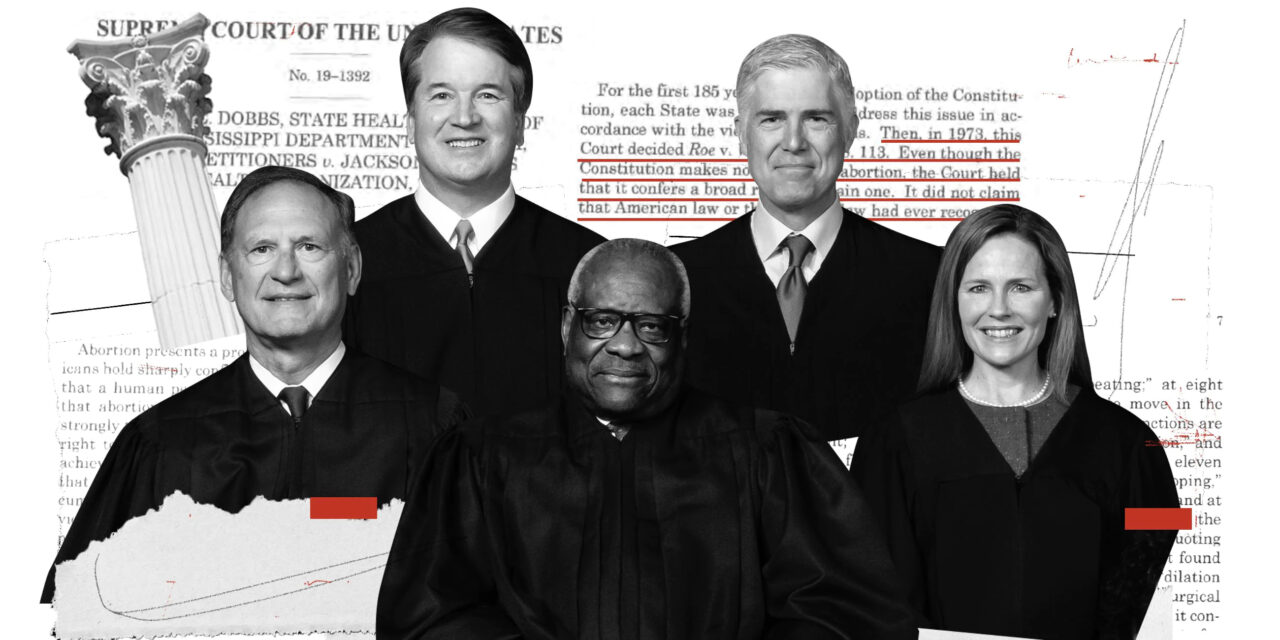Last Friday's historic decision of the US Supreme Court, which overturned the 1973 ( Roe v. Wade ) abortion regulation, strangely enough, is not primarily about abortion.
And as I look at the posts and comments on the topic, the vast majority do not understand this.
The move by the Supreme Court caused an uproar and an earthquake, and not only in the United States. Even in our country, uninformed commentators on liberal portals snort the false slogan of the pro-abortionists - "my body, my decision" - and what do the old scumbag judges not think of themselves when they ban the "human right" to murder, excuse me, to abortion .
But what exactly happened?
Currently, liberal regulations are in force in 29 American member states , although they differ somewhat from each other. According to the surveys, 20 out of 50 member states would restrict abortion more than the current federal laws allow, and 13 of them already have the finished law "in store" in case the Supreme Court makes the decision - and this happened last friday.
Mississippi would prohibit abortion after 15 weeks - 12 weeks in our country and most European countries - except in cases of violence and saving the mother's life. In Arizona, the 15-week restriction will go into effect in September. South Carolina would limit abortion to six weeks, as would Ohio and Georgia. Idaho has a “first heartbeat” law that makes it a crime to terminate a pregnancy after the first heartbeat; this occurs at a fetal age of four to five weeks, but there are also exceptions in cases of violence, blood infection and other health problems.
Arkansas enacted a total abortion ban in 2019, which does not make exceptions in cases of violence and incest. North Dakota, South Dakota and Oklahoma decided similarly: in these states too, only saving the life of the mother could justify abortion. Other states that have enacted similar regulations are Tennessee, Texas, Utah, West Virginia, Wisconsin, Wyoming, Alabama, Louisana, Kentucky and Missouri.
And Florida will introduce a 15-week restriction on abortion starting July 1st, ending its status as an "abortion paradise". Among those mentioned and not mentioned, in the case of Alabama, Arizona, Michigan, West Virginia and Wisconsin, the law before the Roe decision may enter into force, and in North Carolina the fate of the regulation depends on a judicial decision. In some states, the law may go into effect immediately if the Roe case is overruled, in others ten or thirty days later.
From all of this, it is characteristically clear that the states of the USA have quite different views on abortion and its variations, from zero tolerance to a totally liberal approach, which allows abortion even for 9-month-old fetuses.
The decision of the Supreme Court is therefore not about whether it prohibits or protects the right to abortion, the essence of it is that it expresses by referring to the Constitution that it neither prohibits nor protects it, but leaves the decision to the democratically elected state leaders.
In other words, states with very different approaches and systems can now decide based on their own considerations, i.e. freely, not in an authorized way. And the individual's decision can only be interpreted within this framework. In fact, the US society was turned upside down with Roe v. Wade
Robert C. Castel summarized the Supreme Court's decision as follows:
"Before the campaign of hysteria and curse-killing ahead of us, it's worth saying what Roe vs. A dispute known as Wade About much deeper issues than the right to an abortion. If that was all there was to it, the debate would have ended a long time ago by being voted into law as a federal law. But this is really about whether the Constitution and the will of the democratic majority can be circumvented with the help of newly invented "rights". Ultimately, it is about who has the final say in a democracy. We, the People, or a political-legal oligarchy."
In the midst of the noise, let's not lose sight of the essence, because it is surely about nothing else than the principle of popular sovereignty.
Featured image: From left, Justices Samuel A. Alito Jr., Brett M. Kavanaugh, Clarence Thomas, Neil M. Gorsuch and Amy Coney Barrett. (Fred Schilling/Collection of the Supreme Court of the United States/Washington Post illustration)













